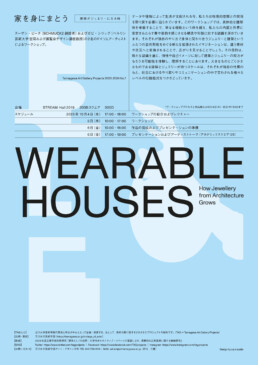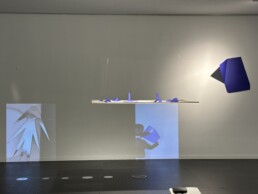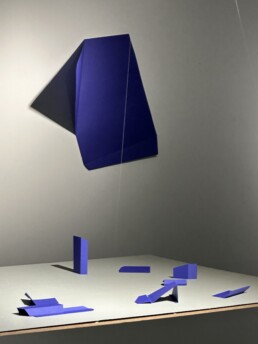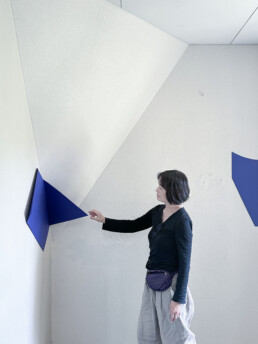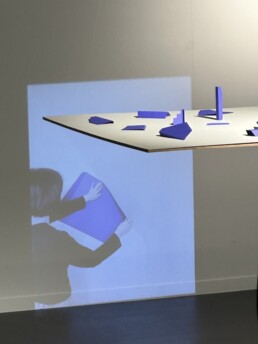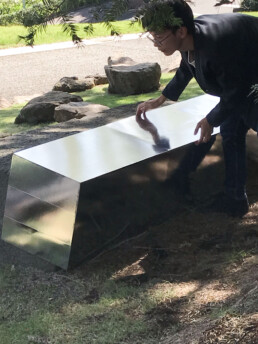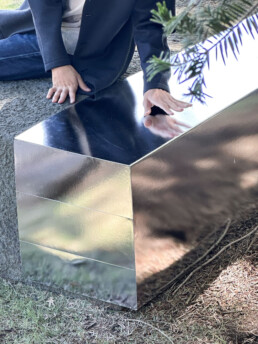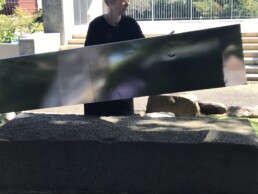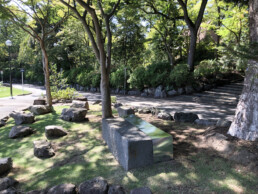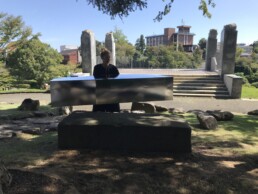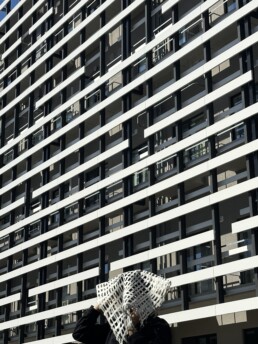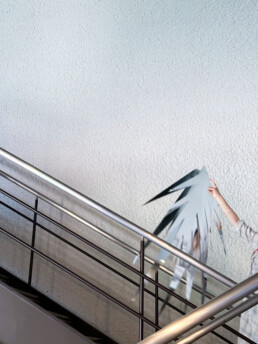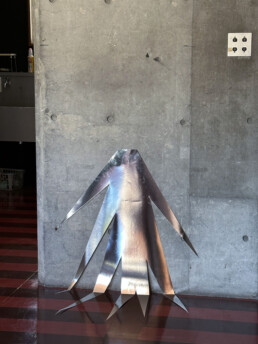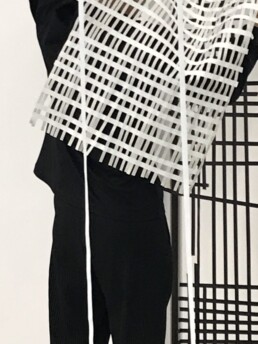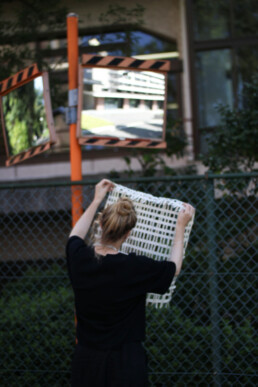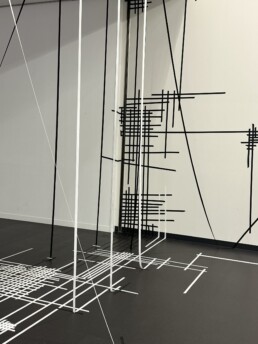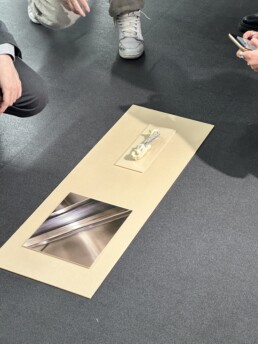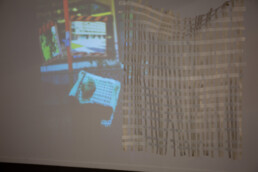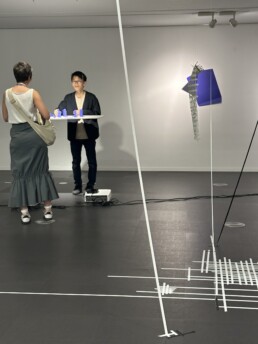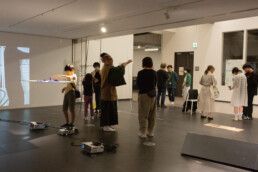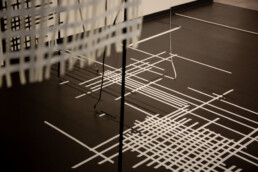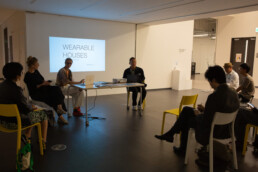24
2023
WEARABLE HOUSES
How Jewellery from Architecture Grows
家を身にまとう
As part of the TAG (Tamagawa Art Gallery) projects, Susan Pietzsch (SCHMUCK2) and Gabi Schillig (Studio for Dialogical Spaces, Berlin & professor for Spatial and Exhibition Design at the Berlin University of the Arts) led a workshop in October 2023 at Tamagawa University Tokyo.
Presentation view / photo© Susan Pietzsch + Gabi Schillig
At a time when information and data dominate our lives, there is an urgent need to re-engage with the physical space, the corporeal, and things that may be changeable and dynamic yet hold a continuous form. We make a conscious turn towards the material to stabilize our lives and connect as a tangible community.
The physical and the beautiful are both concretely present in the categories of architecture and jewellery. The physical provides the fundamental anchor of our lives, while the beautiful gives our lives support beyond function. Both are uniquely related to the human body, having direct influence and dependence on our inner and outer worlds.
Although architecture and jewellery are perceived very differently, both have the ability to articulate identities, and to stimulate, enable or represent communication.
In contrast, architecture and jewellery articulate and relate to the human body in different dimensions and scales. At the same time, we ask ourselves where the body ends and where space begins – and whether this boundary even exists. What dimension can jewellery take on to become architecture and vice versa?
Work by Atsuko Ito / photo© Susan Pietzsch + Gabi Schillig
In this workshop, students developed an awareness of how aspects of jewellery can be perceived in the structures, forms and materialities of their immediate surroundings by exploring and appropriating concrete architectural situations.
Work by Shunsei Yoshida / photo© Susan Pietzsch + Gabi Schillig
By transferring designs to other materials and playfully testing the effectiveness of changes in scale and dimension, participants placed their study of objects in relation to the human body. They then placed both of these together once more into the starting point of the experimental investigation, namely, the context of the architectural space.
Work by Hiyu Hamasaki / photo© Susan Pietzsch + Gabi Schillig
To gain a more multi-layered understanding of jewellery and architecture, Pietzsch and Schillig used themes such as beauty, ornamentation, and decoration as the basis for the investigation. In what ways is the depth and meaning of beauty manifested in jewellery and architecture?
Work by Haruka Sato / photo© Susan Pietzsch + Gabi Schillig
Within jewellery and architecture there is a graduated scale with a subversive quality of its own, from large to very small, that can be used for multifaceted modes of action in social togetherness.
Work by Hiyu Hamasaki / photo© Susan Pietzsch + Gabi Schillig + TAG projects
The goal for participants was to experience and understand the potential for their own personality and self-image through new perceptions, creativity and imagination.
Work by Kazuki Nishinaga / photo© Gabi Schillig
photo© Susan Pietzsch + Gabi Schillig + TAG projects
